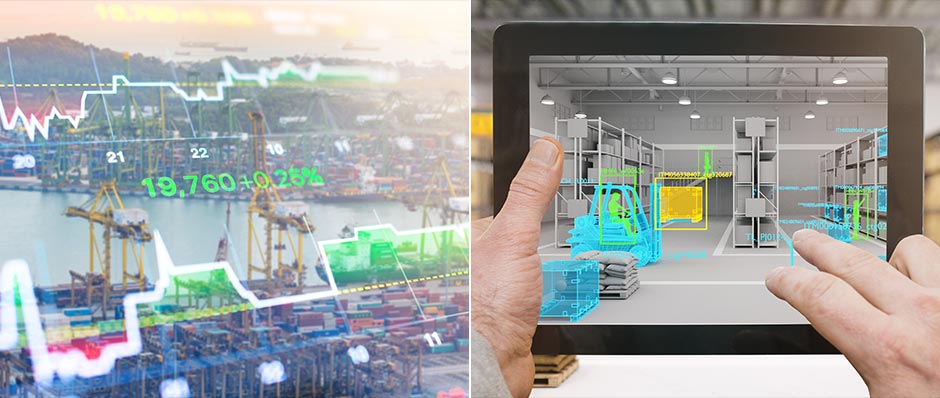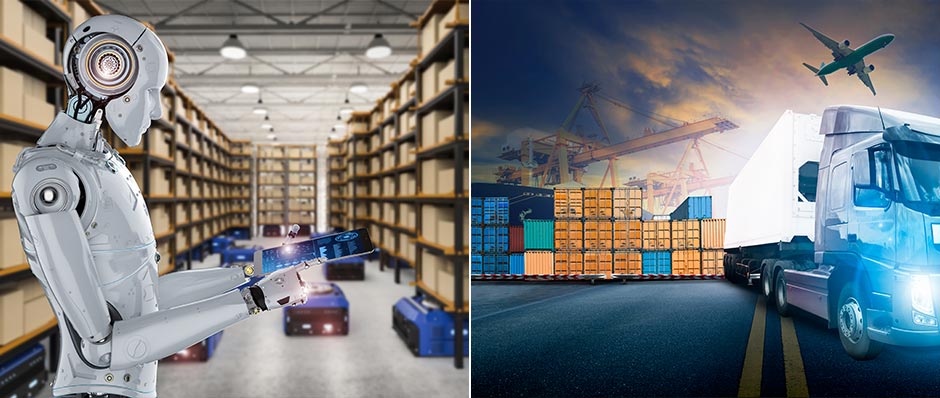From beating us at chess and video games to driving our cars down the highway, artificial intelligence is turning things that once seemed like science-fiction fantasy into a modern reality.
Artificial intelligence-powered assistants found in speakers and smartphones are becoming entwined in our lives, and new technologies like Blockchain are seeing an explosion in development. As these machine learning algorithms evolve, their potential to disrupt and revolutionize business is also gaining momentum.
Across the world, industries involved in international trade are beginning to see this technology change the way everything from managing customer relationships to supply chain management works. Here are three ways that artificial intelligence is revolutionizing international trade.
1. Managing Relationships
While artificial intelligence might seem to be the domain of computer software and obscure technology, it is playing an increasingly crucial role in shaping human relationships. As companies adopt more digital technology, artificial intelligence is changing the way they interact with both their clients and employees.
Instant messaging programs powered by artificial intelligence, known as chatbots, have already changed how customer service agents handle low-value, repeatable tasks. By offering agents back-end prompts with recommendations, they have also created a more personalized customer experience. One Chinese bank, for example, uses artificial intelligence to handle millions of online inquiries, the equivalent workload of 7,000 workers. Artificial intelligence-powered technology is also helping businesses to better understand their clients.
Analytics software combs through vast amounts of client data to provide recommendations, help account managers resolve issues, and facilitate communication between team members. Samsung C&T has been using a customer relationship management (CRM) and big data analytics platform, to do this since January 2018.
The platform allows internal stakeholders to share real-time information to help solve pending issues, manage client accounts, view meeting minutes and more, across multiple platforms. But artificial intelligence isn’t just for customer management, it’s also being used to improve the experience of employees.
As companies mature in their approach to digital technology, artificial intelligence is playing an increasingly larger role in on-boarding new employees, answering frequently asked questions, and improving productivity by discovering workflow inefficiencies.
2. Predicting Demand
As artificial intelligence develops, experts expect that business logistics will see some of the most rapid changes. Helping companies to better understand the nuances of supply and demand is one area the technology will save billions of dollars.
Current estimates show that over a 15-year period, companies misspent between $470 and $630 billion due to oversupply or lack of inventory. Artificial intelligence is now being deployed to help predict these problems and aid in cost reduction. Major e-commerce players have used artificial intelligence to predict demand for up to 18 months for millions of products, while delivery companies have used it to optimize driving routes and reduce their overall mileage, resulting in millions of dollars in savings.
Machine learning is also being used to analyze the causal factors that drive new sales in a given region, allowing companies to forecast demand for new products. In addition to traditional approaches, such as talking to stakeholders and advanced statistical modeling, machine learning is proving to be a valuable tool in discovering influences on demand that were previously unknown and improving production planning.
Manufacturers who rely on build-to-order workflows, for example, can now balance production and demand constraints better, allowing them to reduce supply chain latency for their most frequently used components.
3. Supply Chain Quality Management
With so many stakeholders and partners, the supply chain is often a minefield of potential communication and logistics problems ripe for improvement with artificial intelligence.
Reducing freight costs, improving supplier delivery performance, and minimizing supplier risk are just a few of the ways machine learning is now improving relationships in shipping networks. But perhaps most interesting is the way visual processing is changing quality management.
Since machine learning excels at pattern recognition, there are many potential applications for it to improve the physical inspection and maintenance of assets across the entire supply chain network. Machine learning is proving to be very effective at automating inbound quality inspection at logistics hubs and isolating damaged product shipments.
IBM’s Watson, for example, was able to determine if there was damage to a shipping container or product, classify the damage by time, and recommend the best corrective action to repair the assets.
Using this technology, companies are discovering the factors that cause the most wear and tear and are extending the life of their most important assets including machinery, transportation and warehouse equipment.












